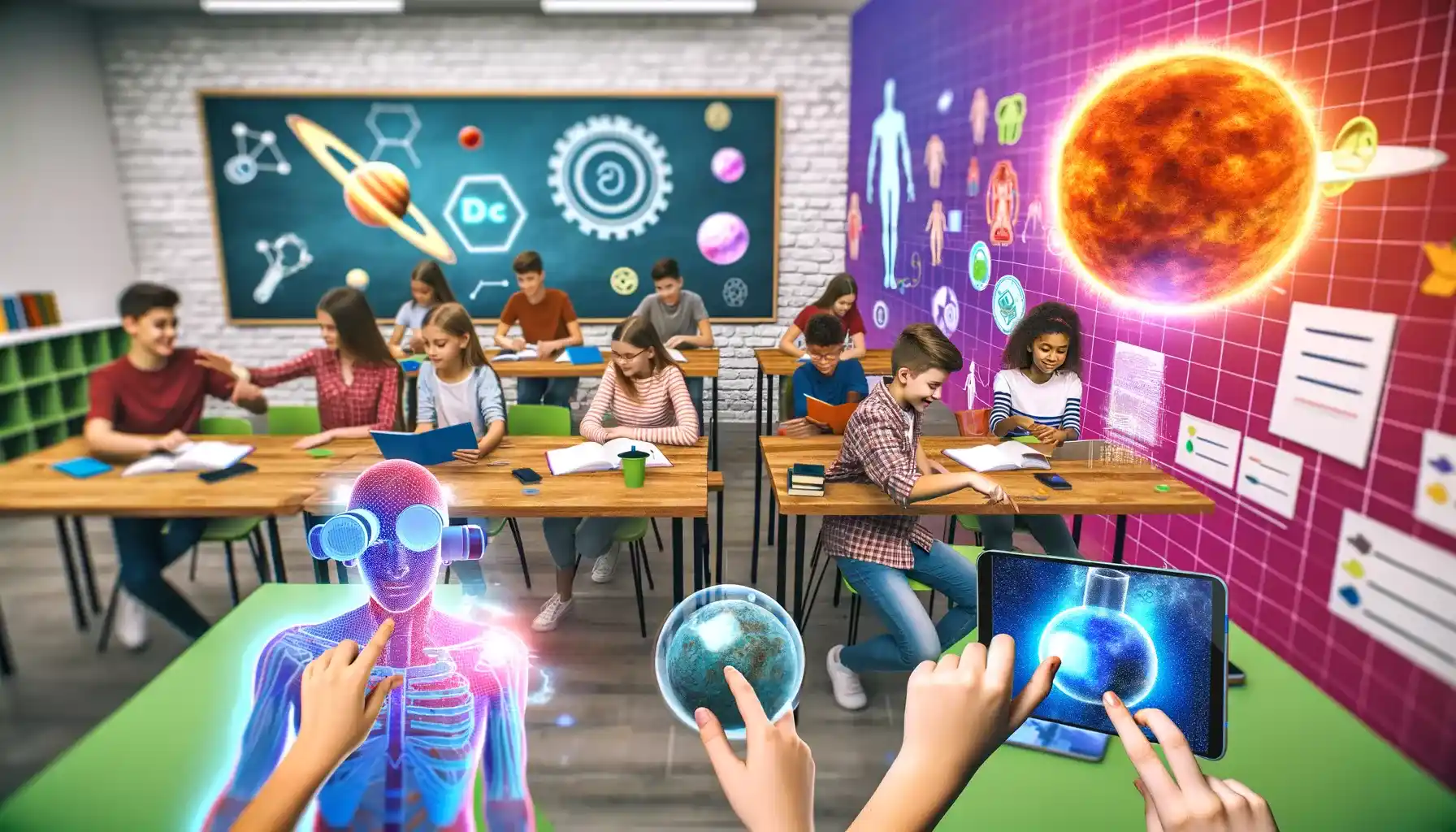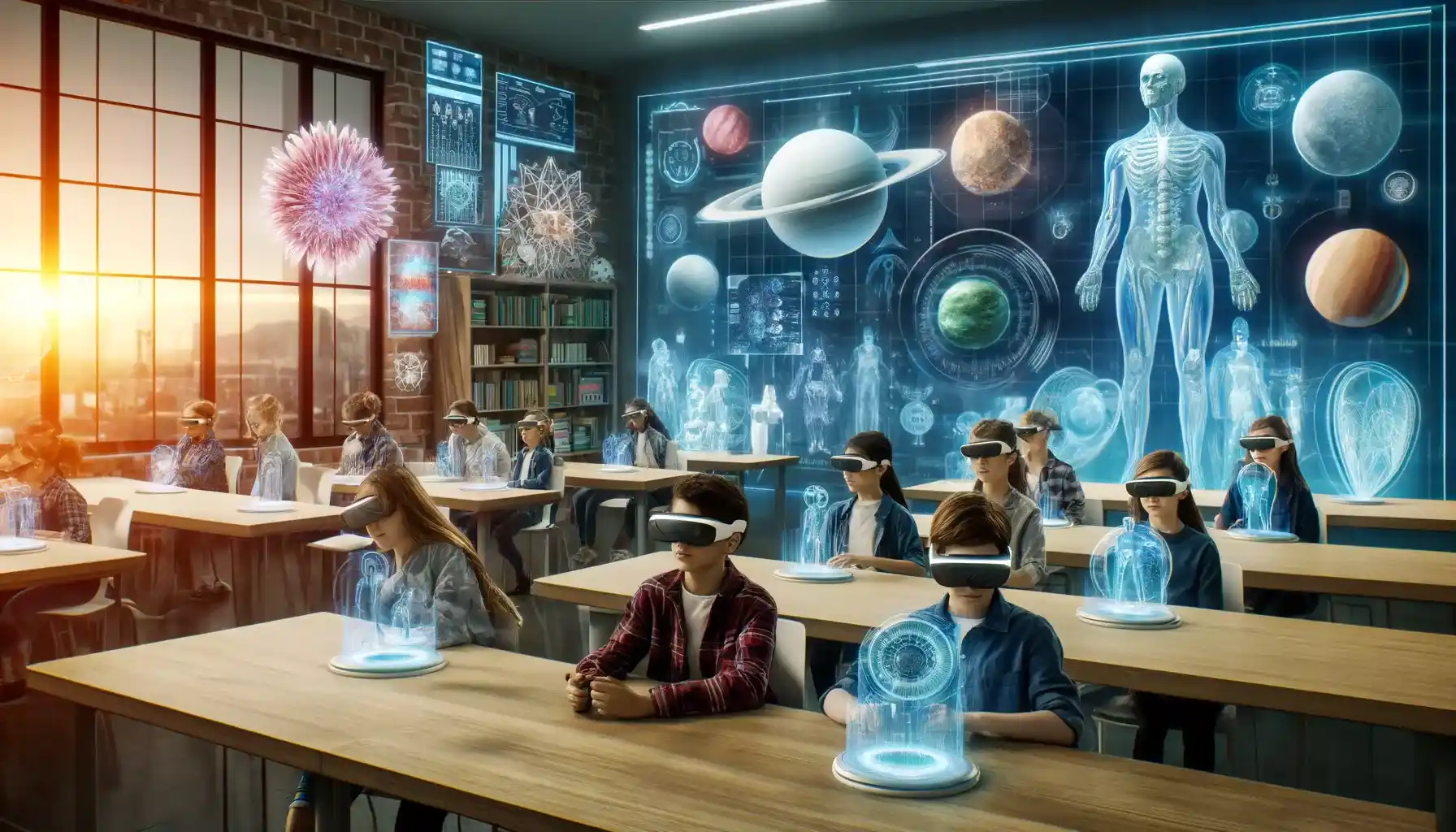Table of Contents
Augmented reality (AR) acts as a magical gateway that seamlessly merges the physical and digital realms. Picture yourself peering through a special lens, where mundane surroundings transform into realms of wonder. AR superimposes computer-generated elements over our real-world environment, enhancing our senses and expanding our experiences.
In an AR-enhanced classroom, you might embark on a captivating expedition through ancient civilizations, surrounded by virtual artifacts.
Alternatively, you could examine the human body, observing animated cells pulsate in your own hands. AR ideas allow us to reimagine our world with vibrant digital brushstrokes, making the once-impossible tantalizingly attainable and igniting our imaginations like never before.
What is AR Ideas?
AR ideas refer to innovative concepts and applications of Augmented Reality (AR) in various fields, including education. AR Ideas blends digital information and objects with the real world in real-time, offering unique interactive experiences. In the context of education, AR ideas can transform traditional teaching methods by incorporating immersive technology into the classroom.
AR can be used to:
- Visualize Abstract Concepts: Teachers can use AR to visually demonstrate abstract scientific principles or historical events, making them easier to understand and remember.
- Interactive Learning Materials: Instead of static images in textbooks, AR can bring diagrams and photos to life, allowing students to explore 3D models by rotating, zooming, and dissecting them through AR interfaces.
- Language Learning: AR ideas can enhance language learning by linking words and phrases to AR visuals of the objects or concepts they represent, providing a more intuitive and immersive learning experience.
- Field Trips and Simulations: AR can simulate field trips to historical sites, museums, or even outer space, providing immersive experiences that are not possible in a traditional classroom setting.
- Collaborative Learning: AR can support collaborative projects and experiments, enabling students to work together on virtual simulations or real-world problems in a shared AR space.
- Gamified Learning: Incorporating game elements into AR applications can make learning more engaging and motivating, encouraging students to participate actively and retain more information.
By adopting these AR ideas, teachers can create a dynamic learning environment that not only captivates students’ attention but also fosters deeper understanding and retention of knowledge.

1. Boosting Learning with AR: Interactive 3D Models & Overlays
- Enhancing comprehension and interactive learning with 3D models and information overlays is a core benefit of AR ideas in education.
- Augmented Reality (AR) offers educators dynamic tools to deepen lessons, enabling students to engage with and manipulate detailed 3D models.
- For example, during a biology class, students can investigate human anatomy with the ability to zoom into organs and systems for a comprehensive understanding.
- Additionally, AR overlays deliver instant data and explanations, such as identifying plant components or describing geological formations in geography lessons.
- This method not only improves understanding of intricate subjects but also promotes active participation, making learning a more immersive experience.
2. Leveraging AR Ideas to Enhance Science Education
- Augmented reality (AR) offers innovative solutions for simulating scientific phenomena and conducting experiments that might be challenging or unsafe in a traditional classroom.
- With AR ideas, students can observe intricate chemical reactions, navigate through the solar system, or watch the water cycle in action via interactive simulations.
- This technology creates a secure and controlled environment for virtual experiments, prompting students to hypothesize, analyze data, and formulate conclusions.
- Engaging in these virtual scientific inquiries with AR helps students hone their critical thinking abilities and gain a more profound respect for the scientific method, making it a vital tool in modern education.

3. Enhancing Language Learning with AR: Apps, Tools, and Interactive Techniques
- Introducing AR apps and tools to enhance language acquisition and vocabulary development marks a transformative approach to language education. These AR ideas foster immersive and interactive experiences that captivate students
- For instance, by pointing their devices at classroom objects, students can instantly see the item’s name in the target language displayed via AR.
- Additionally, AR flashcards enrich this learning by offering visual aids and precise pronunciations, making language learning both engaging and effective.
- Moreover, AR allows students to interact with virtual characters, enabling real-time conversation practice. This not only improves their fluency but also increases their confidence in actively using the new language.
4. AR Ideas in Art: Enhancing Creativity with Digital Overlays
- Augmented Reality (AR) ideas are revolutionizing art education by enabling students to enhance their artwork with digital elements.
- AR allows students to transform their traditional paintings or sculptures into interactive masterpieces by adding animated characters or 3D features.
- Moreover, AR can convert any classroom into a virtual art gallery, where students’ creations are displayed alongside digital overlays, artist biographies, and interactive narratives.
- This blend of art and technology not only enriches the art-making process but also encourages innovation and personal expression among students.

5. AR Ideas in Teamwork: Escape Rooms & Scavenger Hunts in Education
- Augmented Reality (AR) transforms traditional educational activities into thrilling, team-oriented adventures.
- Utilizing AR ideas like escape rooms and scavenger hunts, teachers can create dynamic learning experiences where students collaborate to solve puzzles, tackle challenges, and uncover new knowledge.
- For example, in a history class, students can work together to decipher historical riddles and discover hidden clues that guide them to their next objective. This gamified method not only solidifies learning but also cultivates critical skills such as teamwork, communication, and problem-solving compellingly and memorably.
Conclusion
Augmented reality (AR) is redefining the educational landscape by introducing interactive and immersive methods that not only enhance learning but also promote collaboration among students.
By incorporating AR escape rooms and scavenger hunts into the curriculum, educators can transform conventional classroom dynamics into engaging, cooperative experiences that encourage problem-solving and teamwork.
These AR ideas not only make learning more enjoyable but also prepare students for the future by developing essential skills such as critical thinking, communication, and adaptability.
As AR technology continues to evolve, its potential to enrich educational environments and captivate students’ imaginations promises to make a significant impact on teaching and learning processes.